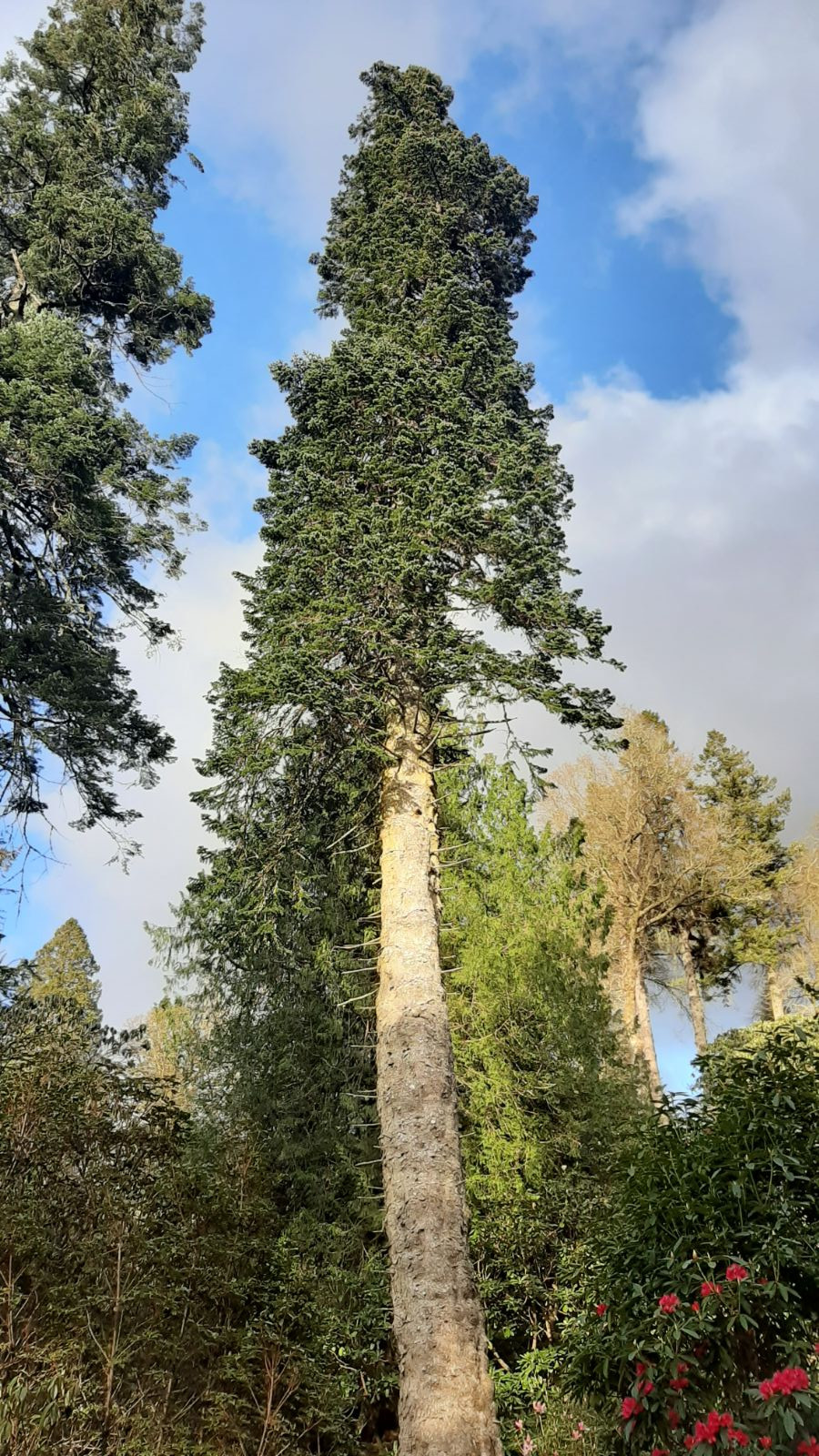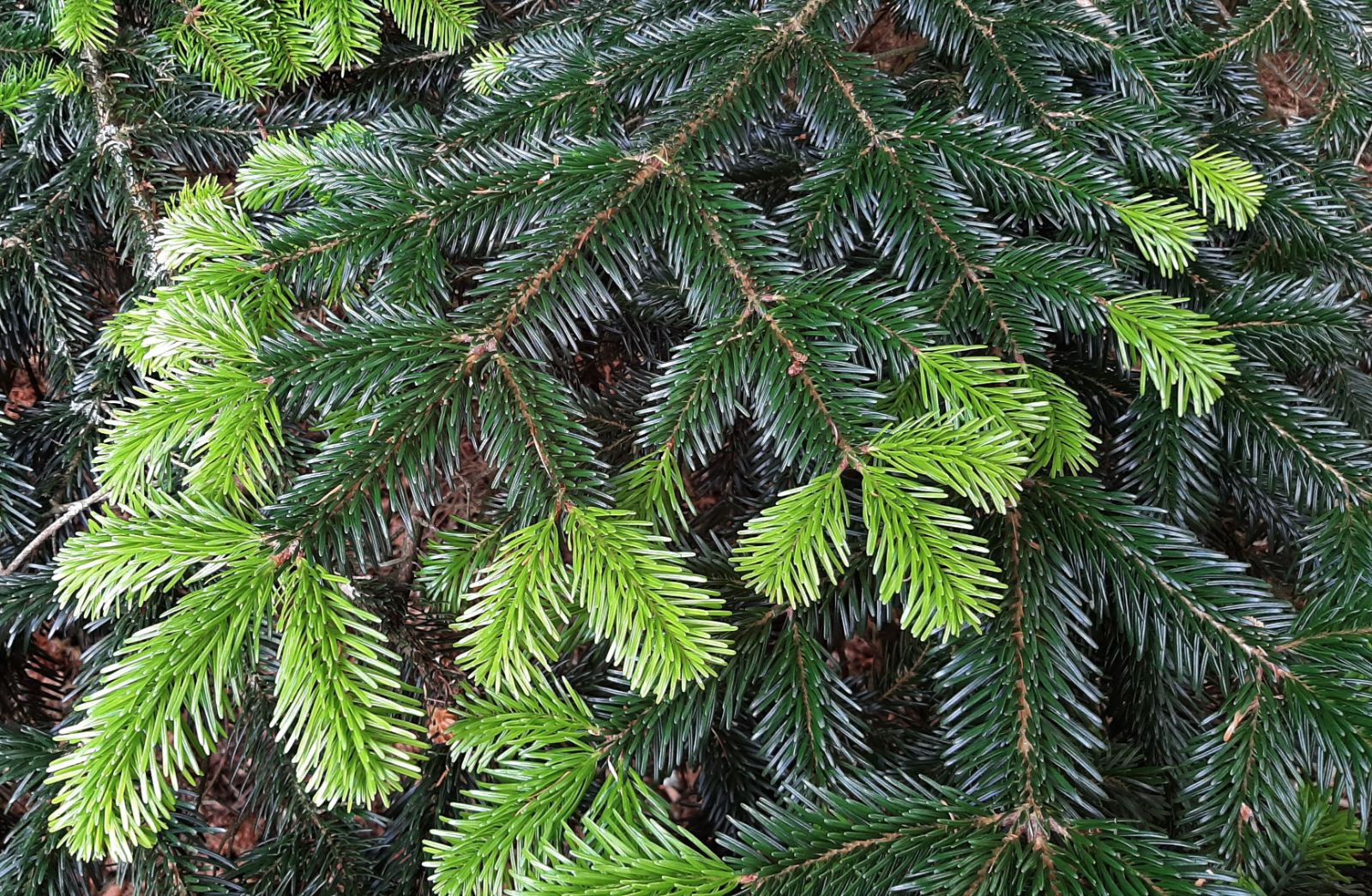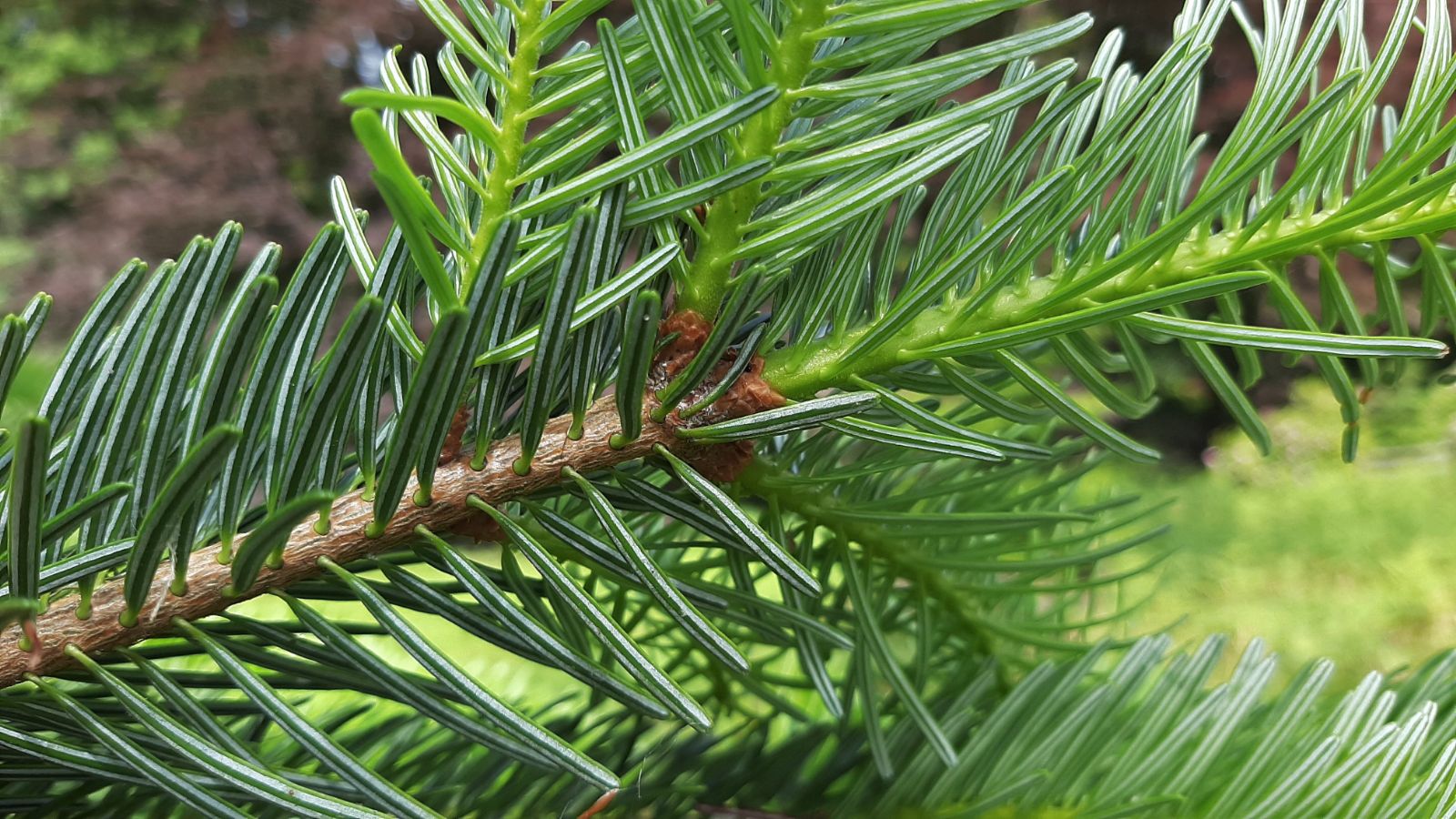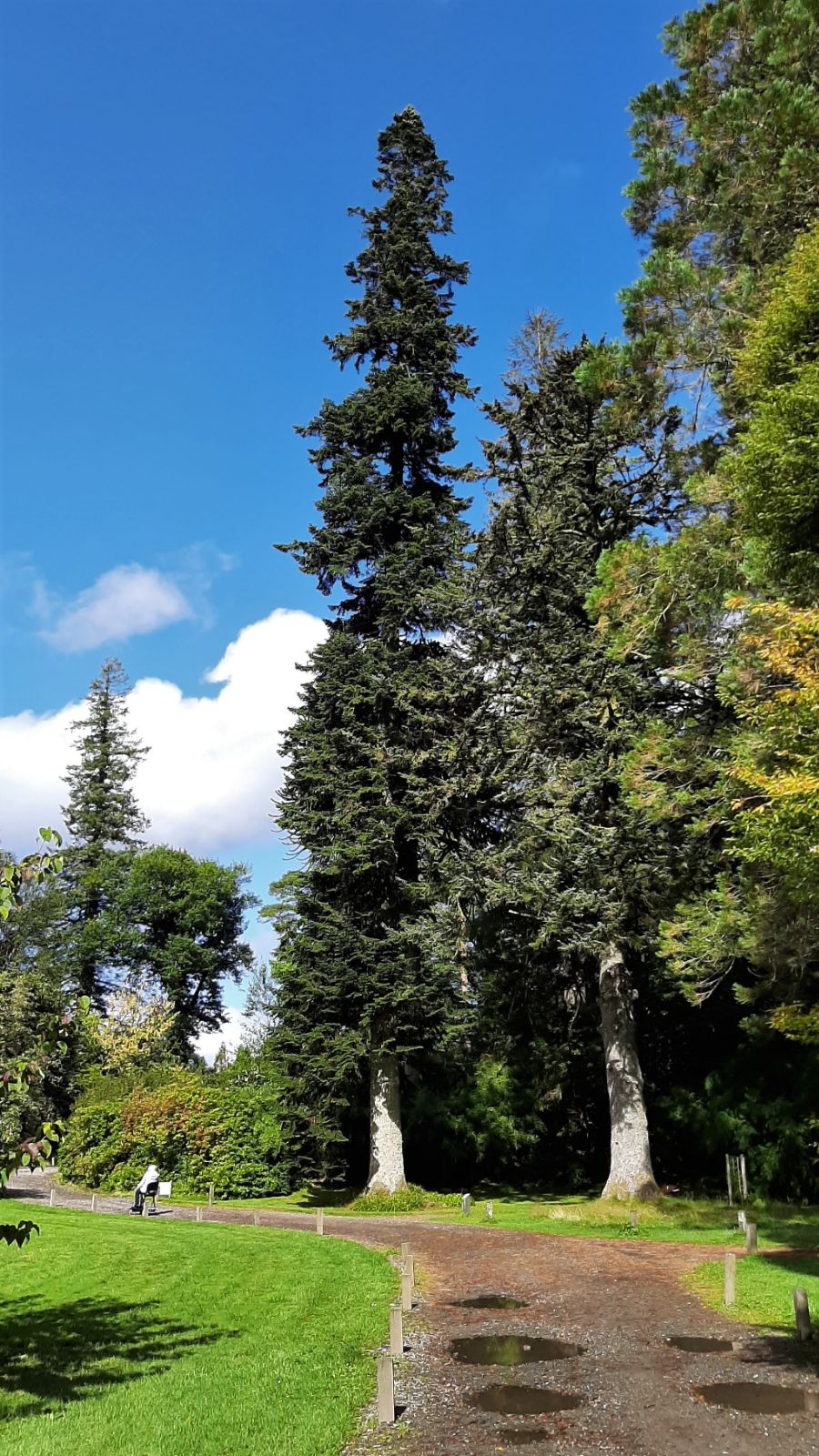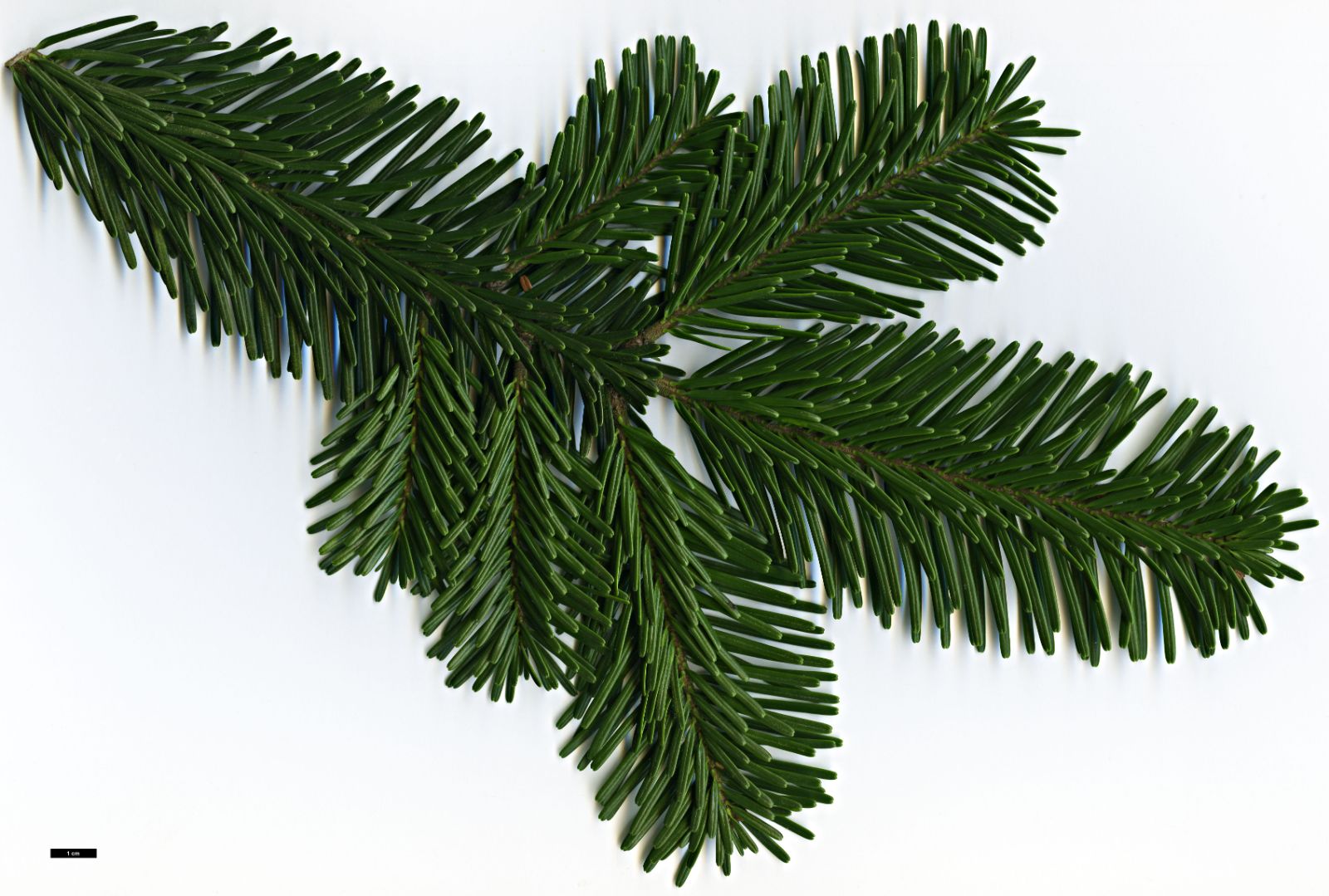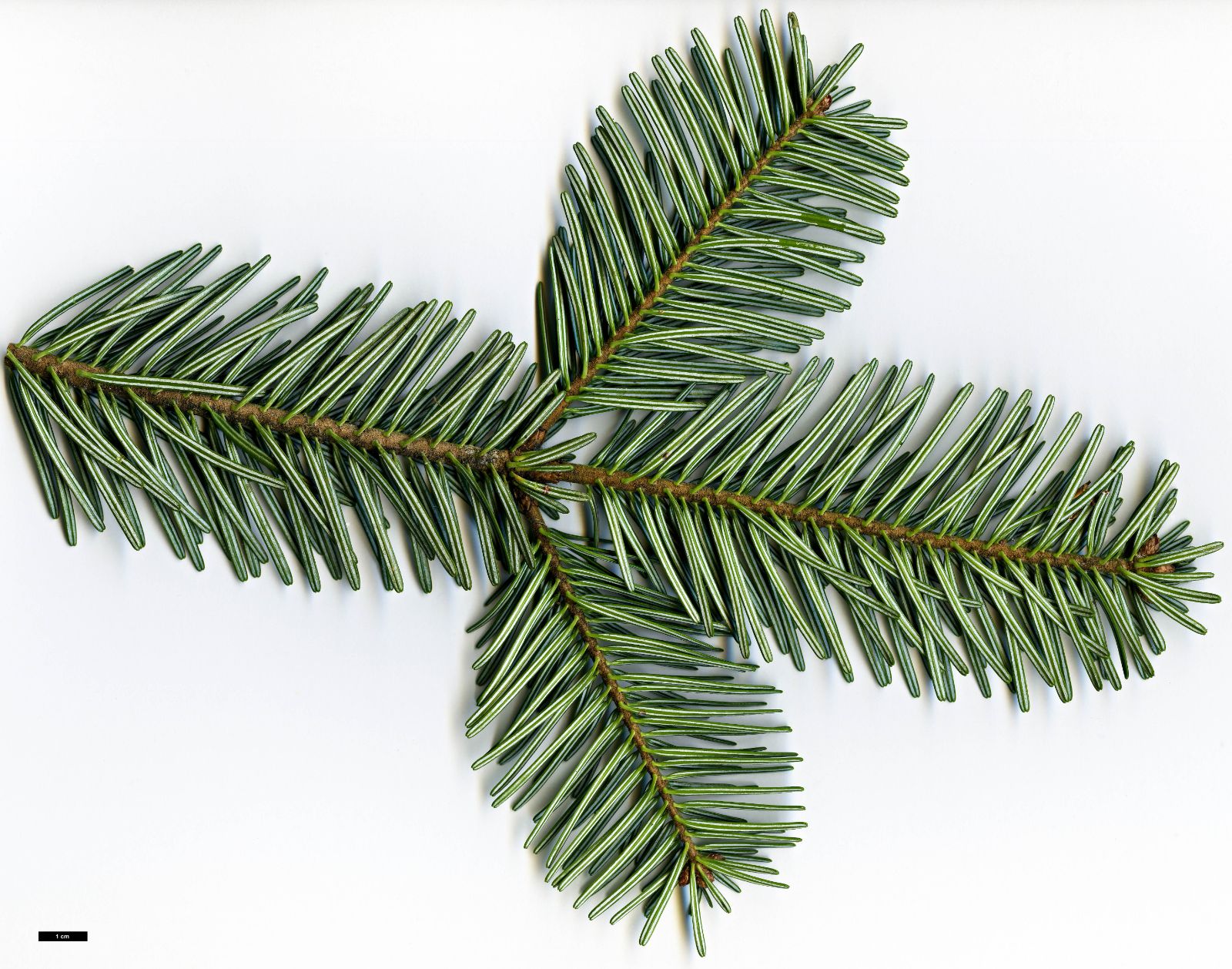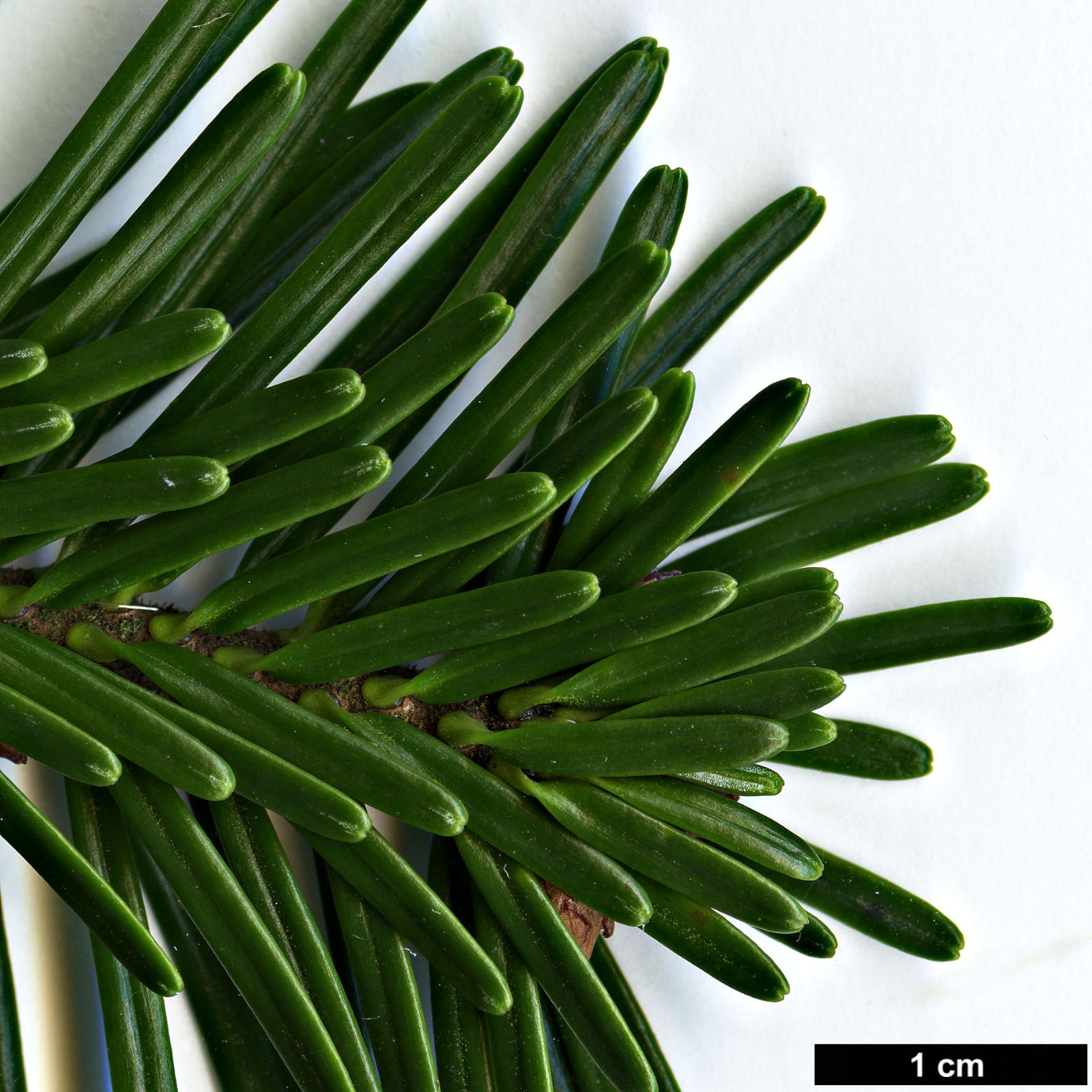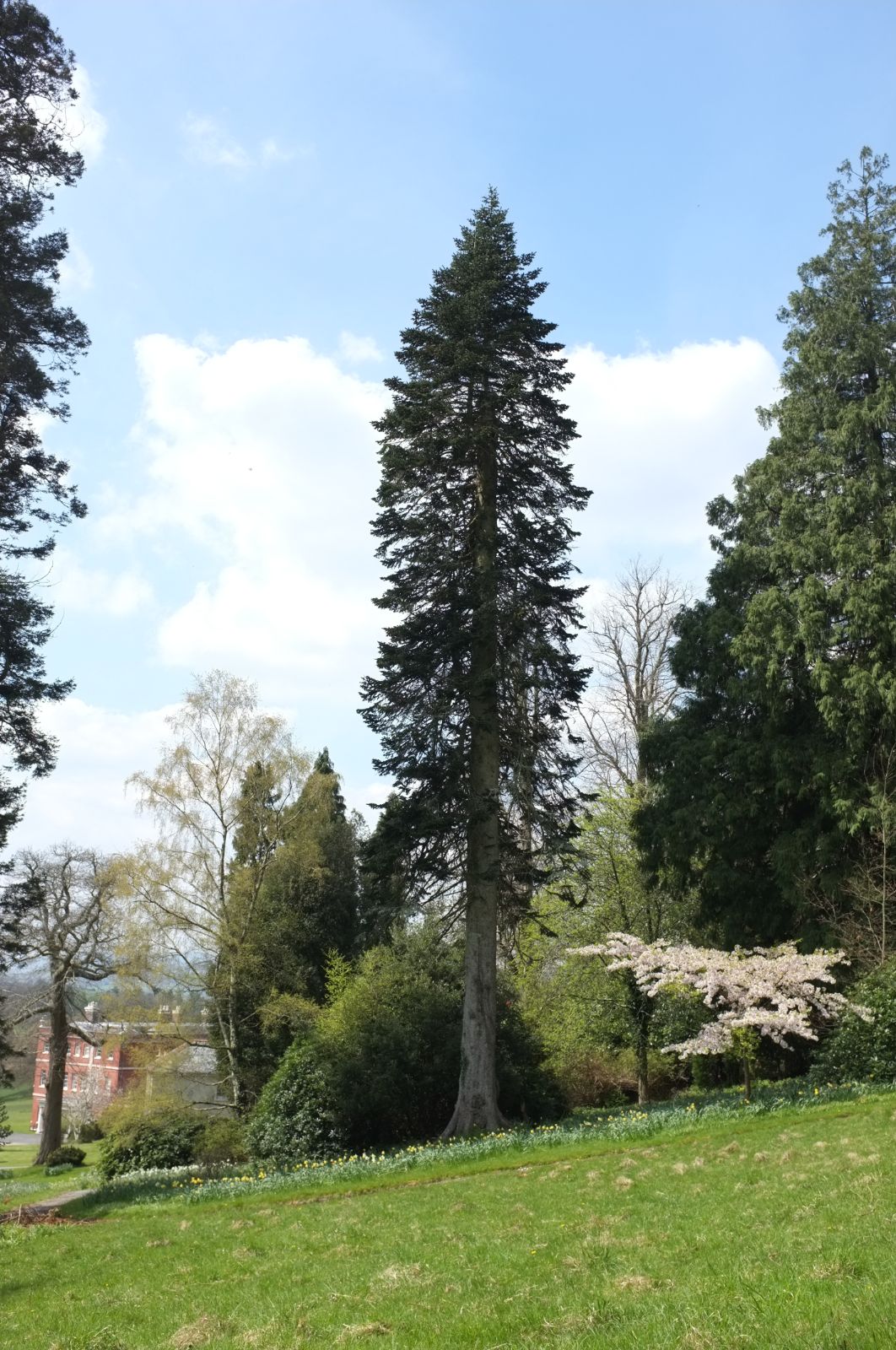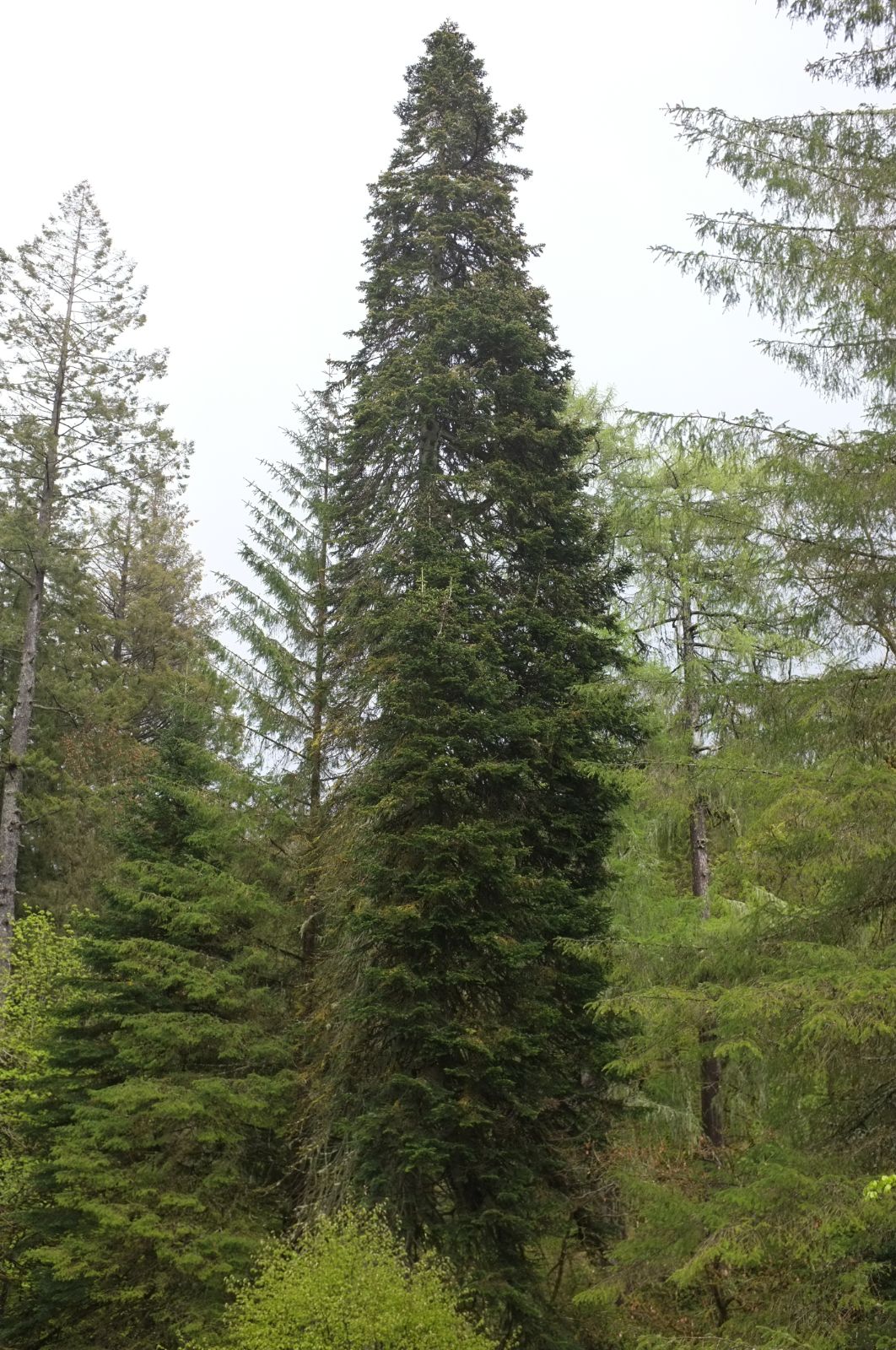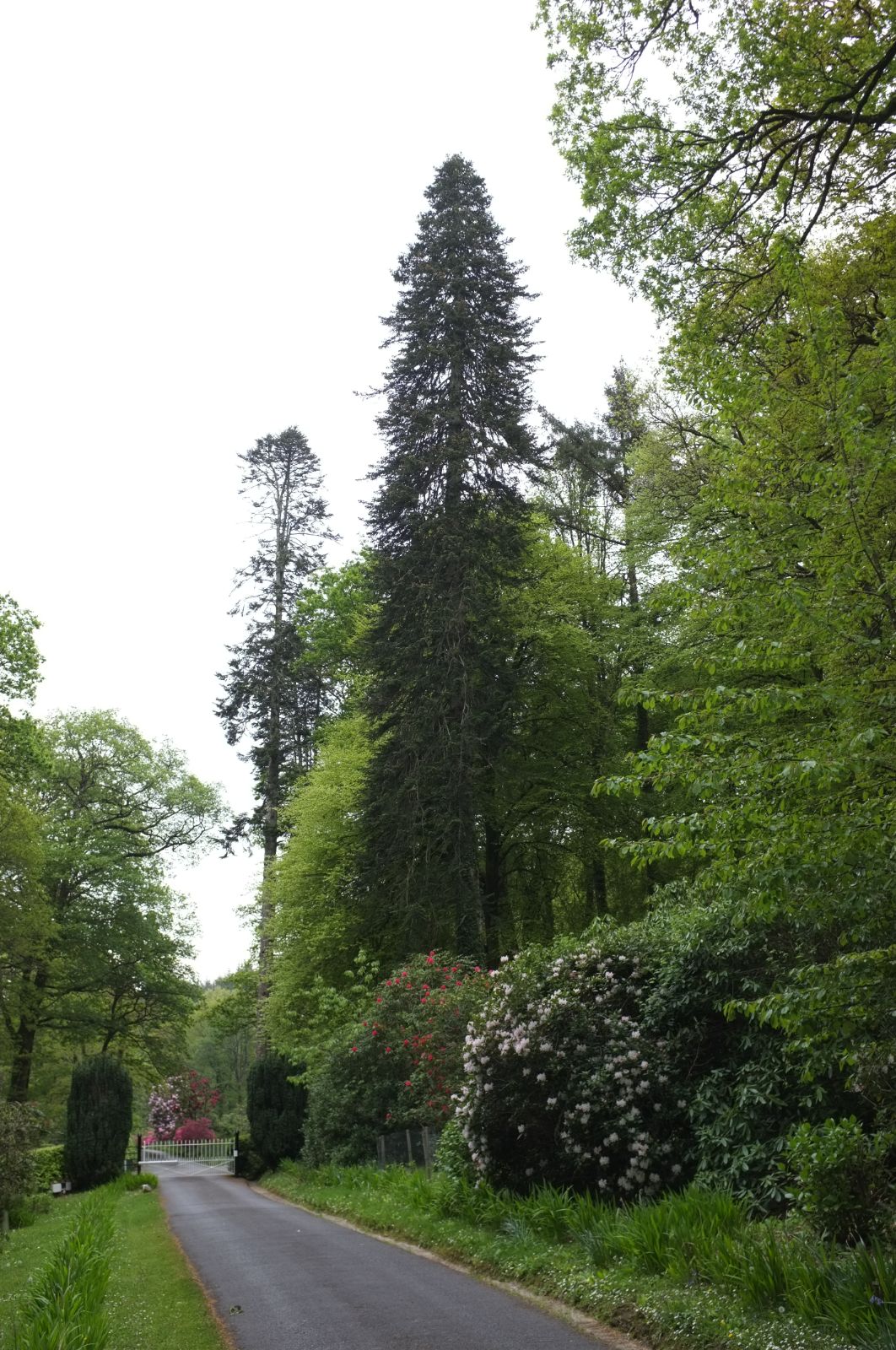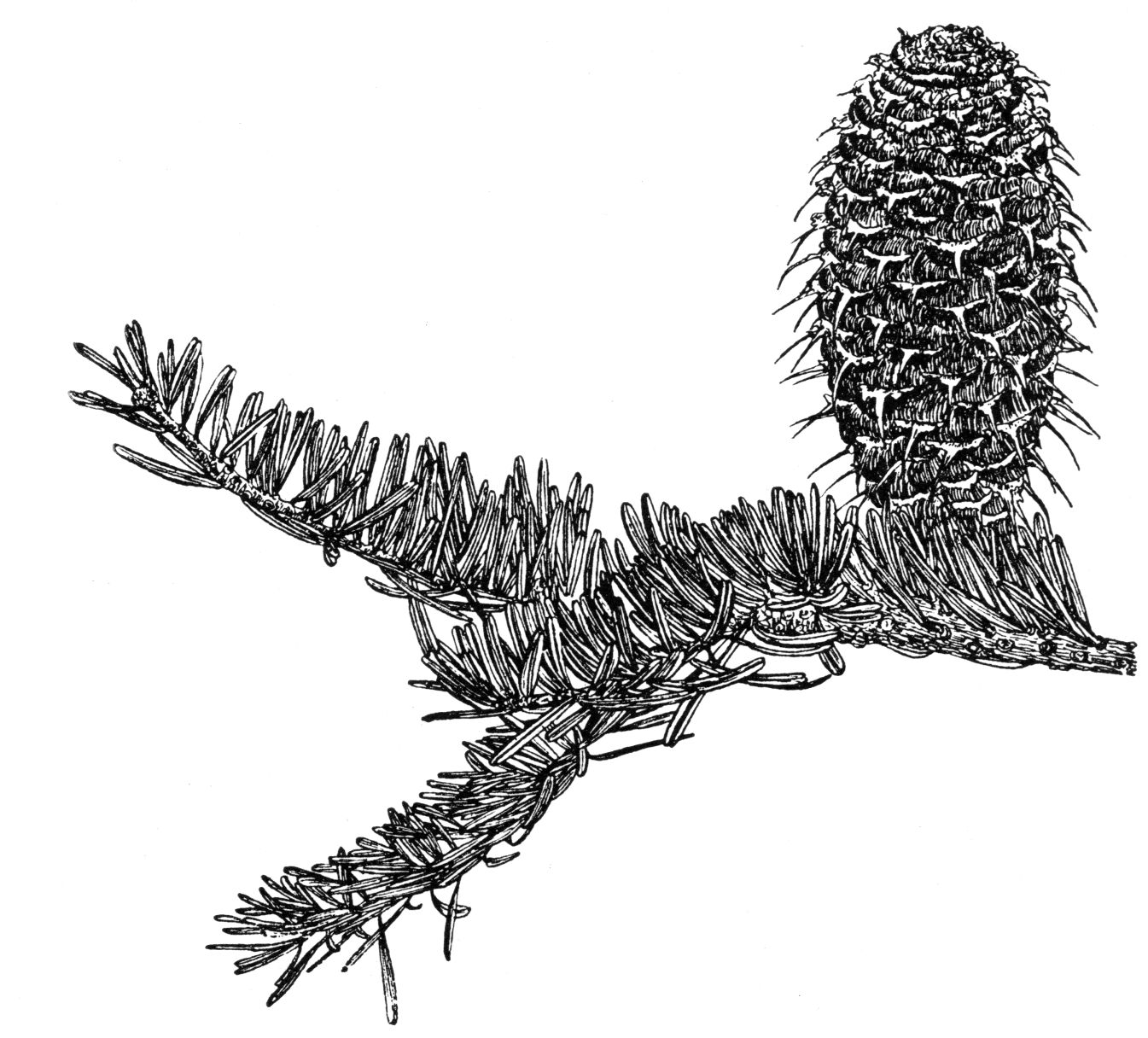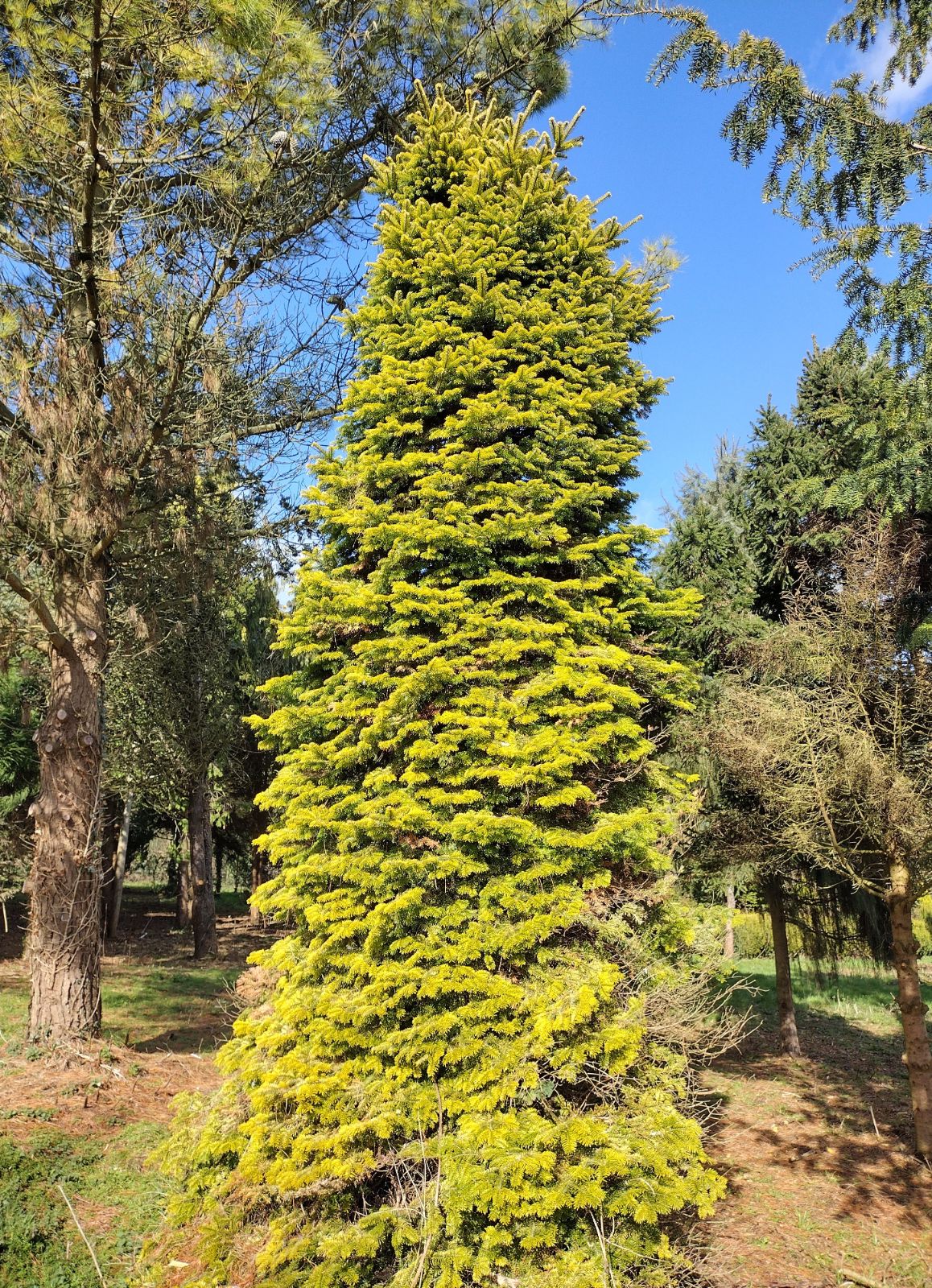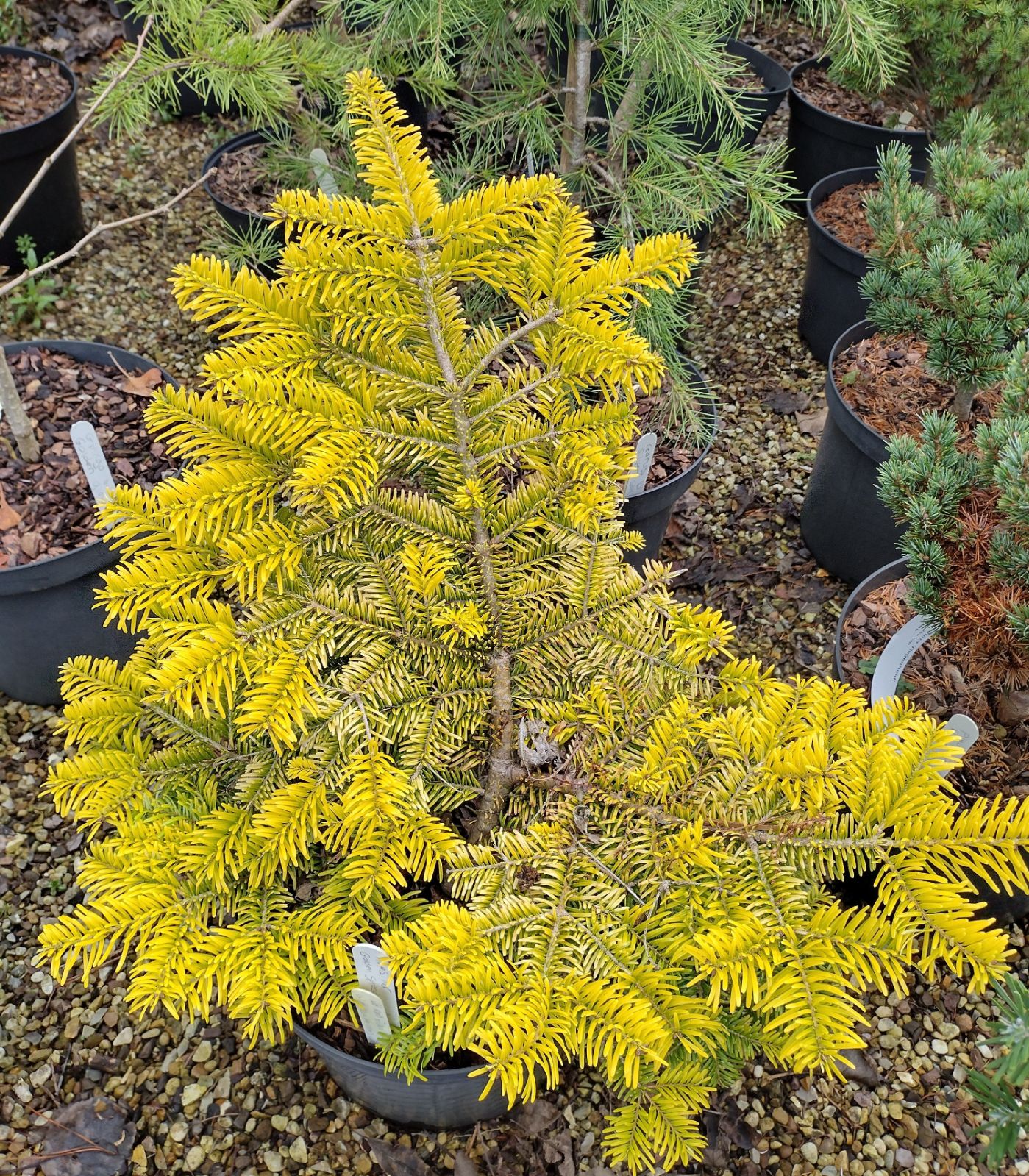Abies nordmanniana
Sponsor
Kindly sponsored by
Sir Henry Angest
Credits
Tom Christian (2021)
Recommended citation
Christian, T. (2021), 'Abies nordmanniana' from the website Trees and Shrubs Online (treesandshrubsonline.
Genus
Common Names
- Caucasian Fir
- Nordmann Fir
- Sapin de Nordmann
- Sapin du Caucase
- Nordmannstanne
Infraspecifics
Other taxa in genus
- Abies alba
- Abies amabilis
- Abies × arnoldiana
- Abies balsamea
- Abies beshanzuensis
- Abies borisii-regis
- Abies bracteata
- Abies cephalonica
- Abies × chengii
- Abies chensiensis
- Abies cilicica
- Abies colimensis
- Abies concolor
- Abies delavayi
- Abies densa
- Abies durangensis
- Abies ernestii
- Abies fabri
- Abies fanjingshanensis
- Abies fansipanensis
- Abies fargesii
- Abies ferreana
- Abies firma
- Abies flinckii
- Abies fordei
- Abies forrestii
- Abies forrestii agg. × homolepis
- Abies fraseri
- Abies gamblei
- Abies georgei
- Abies gracilis
- Abies grandis
- Abies guatemalensis
- Abies hickelii
- Abies holophylla
- Abies homolepis
- Abies in Mexico and Mesoamerica
- Abies in the Sino-Himalaya
- Abies × insignis
- Abies kawakamii
- Abies koreana
- Abies koreana Hybrids
- Abies lasiocarpa
- Abies magnifica
- Abies mariesii
- Abies nebrodensis
- Abies nephrolepis
- Abies nukiangensis
- Abies numidica
- Abies pindrow
- Abies pinsapo
- Abies procera
- Abies recurvata
- Abies religiosa
- Abies sachalinensis
- Abies salouenensis
- Abies sibirica
- Abies spectabilis
- Abies squamata
- Abies × umbellata
- Abies veitchii
- Abies vejarii
- Abies × vilmorinii
- Abies yuanbaoshanensis
- Abies ziyuanensis
Tree to 60 m tall, to 2 m dbh. Crown conical or pyramidal in young trees, becoming narrowly conical, later narrowly columnar with age, old trees often flat-topped. Bark of young trees grey, smooth for many years, becoming scaly and longitudinally fissured, brown- or blackish-grey in old trees. First order branches ascending at first, later horizontal, short; second order branches spreading horizontally. Branchlets slender, firm, shining yellowish-brown, maturing to grey, shallowly grooved, with brown pubescence in grooves. Vegetative buds ovoid-conical, to 6 × 5 mm, not resinous. Leaves of lower ranks pectinate, spreading either side of shoot and slightly forwards, leaves of upper rank somewhat radial, strongly forwards, sometimes incurved, usually obscuring the shoot, 1.5–3.5 cm × 1.5–2.5 mm, strongly twisted at base, apex emarginate or obtuse, glossy dark green above with a central groove, margins often slightly recurved, stomata in two silvery or greenish-white bands below. Pollen cones crowded, pendulous, 1–2 cm long, yellowish. Seed cones short-pedunculate, ovoid-cylindrical, with a pointed or papilliform apex, 10–16(–20) × 4–6 cm, greenish-yellow when immature, maturing reddish-yellow then brown; seed scales flabellate or cyathiform, 1.8–2.5 × 2.7–4 cm; bracts long-exserted and reflexed. (Farjon 2017; Debreczy & Rácz 2011).
Distribution Georgia Russia Caucasus Turkey Caucasus
Habitat In temperate montane forests from 900–2100 m asl, in areas characterised by warm summers and cold winters with high precipitation. It forms coniferous forest with Picea orientalis and, more rarely, Pinus sylvestris, or occurs in mixed forests with Fagus orientalis, Buxus colchica, and Ilex colchica.
USDA Hardiness Zone 5
RHS Hardiness Rating H5
Conservation status Least concern (LC)
Nordmann or Caucasian Fir, Abies nordmanniana subsp. nordmanniana, is a highly ornamental and widely grown tree. It is native to an arc of mountains around the eastern Black Sea, from extreme northeast Anatolia through Georgia into the southwest Russian Caucasus. The species is represented further west in Anatolia by its subspecies equi-trojani, discussed separately below.
Both Nordmann Fir’s scientific and common names commemorate Professor Alexander Davidovic von Nordmann, a Finn who was based at Odesa when he brought this fir to the attention of botanical science after finding it in Adjara (in modern day Georgia) in 1836 or 1837 (Jacobson 1996). The presence of a fir in the Caucasus had been known prior to 1800, but until von Nordmann’s visit it was assumed to be nothing more than an eastern extension of the widespread European A. alba (Mitchell 1996). Modern western literature generally credits its introduction to Lawson’s Nursery of Edinburgh, UK, although the date is contested, with the given year ranging from 1838 (Farjon 2017) to 1847 (Mitchell 1996). We know that von Humbolt introduced it to the Berlin Botanic Garden in 1848, but by this time it was already present in European collections. Baron Serret, for example, obtained plants from Lawson’s for the pinetum at Beernem, Belgium, in 1847 (Elwes & Henry 1906–1913). For Lawson’s to have provided living plants in 1847 the earlier date of introduction seem more plausible, and while there is no record of an introduction to cultivation in Russia predating the introduction to Lawson’s, it would not be surprising if such a record surfaced in the future.
Following Nordmann Fir’s introduction to Britain, young trees soon suffered from infestations of Adelges, mirroring earlier experiences with A. alba. The Caucasian species recovered faster than the European, though, and was otherwise found to be less exacting in its requirements, more vigorous, and more handsome a subject in gardens. Consequently, Nordmann Fir soon became a popular tree, and Alan Mitchell (1996) explains a series of fortunate events that led to it becoming so common a feature of larger gardens and landscapes, at least in the UK and Ireland. As Nordmann Fir first became available in the late 1840s, supplies of the other large-stature conifers, previously introduced by David Douglas from the Pacific Northwest in the early 1830s, were dwindling. They would remain in short supply until the major introductions of the early 1850s. Meanwhile, the advantages that Nordmann Fir has over A. alba helped it to usurp that species in popularity relatively quickly. With its reputation established, Nordmann Fir’s lucky break came in 1859 when the Oregon Association – an association of British landowners and a few nurserymen that had been formed in 1849, with the aim of recollecting and redistributing David Douglas’s discoveries – considered its task complete and was preparing to disband. The association was formally disbanded on 30th May 1859, but four days earlier it had accepted £50 worth of Nordmann Fir seed. This was a huge quantity of seed even by the standards of the day, and the association distributed it among its members and to multiple additional nurseries. The result was that within a few years Nordmann Fir was included in all the standard ‘sets’ of conifers sent out by nurseries to establish fashionable new pineta, a legacy still in evidence today (Mitchell 1996).
The Oregon Association’s swan song may have been the source of the first seed to reach North America. The species was introduced here in c. 1860 and was listed in the 1862 catalogue of Parson’s nursery of Long Island, New York, which fits chronologically with the massive quantity of seed received by the Oregon Association in Britain. Perhaps some of this was sent on across the Atlantic, or perhaps the Oregon Association’s source also sent a consignment directly west. Whatever the source, 1859–1860 was clearly a watershed moment for the Nordmann Fir on both sides of the Atlantic. It would become ‘one of the most common and successful foreign firs grown in Canada and the US’ (Jacobson 1996). The same is true in Britain: Mitchell noted that ‘there are specimens in almost every [British and Irish] pinetum, partly due to this last minute extension of its proper area by the Oregon Association’ (Mitchell 1996).
Perhaps when he wrote those lines Alan Mitchell doubted whether the Nordmann Fir would ever again be quite so popular as in its Victorian heyday. Alas, he didn’t live long enough to see fate deal the species yet another peculiar twist, for in recent years the Nordmann Fir has become an increasingly popular choice of Christmas tree in European countries on account of its habit of holding its needles for several weeks after cutting (Savill et al. 2016). An increasing proportion of these Christmas trees are sold as ‘living’ trees (i.e. pot grown, where top growth remains united with a catastrophically deformed root system) and after the festivities have concluded many hundreds of Nordmann Firs are planted in gardens each year. The arboreal ghosts of Christmases past are an increasingly common sight in domestic gardens the length and breadth of the UK and Ireland. The proud owners of these trees may experience a modicum of concern, or even a twinge of regret, when they learn that their Nordmann Firs can grow into enormous, albeit beautiful trees. The tallest on record grow in native forest in the Russian Caucasus where they exceed 60 m in height. Suburban gardeners should not panic, though: the tallest in cultivation is a mere 50 m, growing amongst other coniferous giants in the sheltered valley near the iron bridge at Cragside, Northumberland, UK. Several others in the UK are approaching this record, while a total of 25 known specimens exceed 40 m here (Tree Register 2020). The website monumnetaltrees.com does not report any cultivated trees in mainland Europe exceeding 40 m, but there are numerous examples in central and western Europe comfortably exceeding 30 m. Height records from North America are scarce, but it is valued as an adaptable landscape tree here (Dirr 2011) and Jacobson (1996) gives two approaching 30 m, one in Rochester, New York, and another in Victoria, British Columbia, while another, in Wallingford, Pennsylvania, is reported by monumentaltrees.com. ‘Champion Trees of Pennsylvania’ report a tree at Gettysburg National Cemetery, 33 m × 1.1 m dbh in 2009 (pabigtrees.com). A remarkable report from the New Zealand Tree Register gives a tree 45 m × 1.8 m dbh growing on a farm near Tapawera, Tasman District (notabletrees.org.nz).
The giant wild trees of 60 m are illustrated in photographs on the website monumnetaltrees.com. These show beautiful Nordmann Fir-Oriental Beech (Fagus orientalis) forest with an understorey of Rhododendron. Over a large ecological range Nordmann Fir has a broad range of associates; at higher altitudes it often associates with Picea orientalis and more locally with Pinus sylvestris. It can form pure forests, and does so most often on limestone, where other tree species are less competitive.
Nordmann Fir is variable in needle length, density, and curvature, but it can readily be distinguished from nearly all other firs by its needle arrangement. The relatively broad, densely set needles are always swept forwards above the shoot, usually completely obscuring it when viewed from above, and more often than not curved slightly inward. In this arrangement it superficially resembles A. amabilis and A. mariesii, but each of those hold their needles in much flatter sprays and they tend not to have the same curvature.
Dwarf Cultivars
Just as with Abies alba, the familiar and long-grown Nordmann Fir has given rise to a multitude of cultivars, including a large number of dwarf selections. Perhaps because its native range is in the Caucasus rather than in Europe these are fewer in number than is the case with European Silver Fir; listing a selection of the most important is, consequently, not such an impossible task as it is for A. alba. Elsewhere in this account of the genus the catch-all term ‘dwarf cultivars’ is taken to mean, typically, <3 m in ten years. Seveal of the cultivars treated separately under A. nordmanniana fall into this category; these have been afforded individual treatments on accout of their distinctiveness. The following are all, except perhaps in the eyes of dedicated specialists, very similar indeed. All are extreme dwarfs (i.e. < 1 × 1 m in ten years) unless otherwise stated:
- ‘Barabits Compact’ A low mat-forming selection raised in Hungary in 1985
- ‘Brandt’ Selected in the US, in ten years to 1.5 × 1.2 m
- ‘Brevifolia’ An old selection raised in France before 1867, contorted branchlets and leaves
- ‘Dahlheim’ (‘Berlin’, ‘Eschrich’) Of compact, globose habit, raised in Germany
- ‘Dobřichovice’ Compact pyramidal form of dense growth, raised from a witches’ broom found in Czechia in 1998. The needles are assurgent revelaing silvery undersides in a manner similar to some A. koreana selections
- ‘Durham Dwarf’ A dwarf pyramidal selection raised in the USA
- ‘Eschrich’s Variegated’ Raised in Germany in the early 2000s this cultivar is a slow-growing upright plant, with some leaves fully yellow, others green and yellow
- ‘Horizontalis’ An old French cultivar of very low, spreading, compact habit
- ‘Jakobsen’ A witches’ broom discovered in Denmark, this is a minute, prostrate selection growing only 2–3 cm per year
- ‘Jensen’ A pendulous selection of Danish origin, ultimately several metres tall
- ‘KBNG’ (‘Hunnewell Broom’, ‘Broom H’) A witches’ broom found on the Hunnewell estate in Massachusetts in the 1990s. It forms a low-growing mound of very dense, incredibly slow growth
- ‘Midwinter Gold’ Pyramidal selection with yellowish leaves through summer, turning a warm golden-yellow in winter
- ‘Petra’ A miniature of irregular habit and exceedingly slow growth
- ‘Pere Hasselt’ Similar to ‘Petra’, but perhaps twice as fast
- ‘Procumbens’ ’Procumbens’, an aptly named selection forming a wide-spreading mat, faster and ultimately larger than many listed here, to 30 × 150 cm in ten years. Raised at the Korník Arboretum in Poland in 1834
- ‘Saerling’ A very compact pyramidal form selected in the Netherlands in the 1990s, perhaps to 1.5 m or more in ten years
- ‘Schwarzgrun’ A slow-growing pyramidal tree to 2 m in ten years
- ‘Secrest’ Propagated from a witches’ broom found at the Secrest Arboretum, Ohio, in the 1990s, but otherwise an unremarkable dwarf shrub of globose habit and average growth
- ‘Silberspitze’ Shrubby selection growing broader than tall, with creamy-white growth in the spring, darkening by autumn
- ‘Trautmann’ A narrowly pyramidal tree of upright growth and average vigour, raised in Ohio
- ‘Verkades Prostrate’ A mat-forming selection of perhaps above-average vigour for a leaderless selection, to 1 m across in ten years
(Auders & Spicer 2012; Hatch 2021–2022).
'Golden Spreader'
Awards
RHS AGM
A widely grown and variable entity. In its formative years, ‘Golden Spreader’ forms a low, spreading shrub of dense growth with good foliage colour throughout the seasons, up to 50 × 100 cm after ten years. Some well-established plants develop a leader and slowly form a dense, compact pyramid of yellowish foliage perhaps 2 or 3 metres tall given time. Like many yellow-leaved plants it benefits from some light shade in hotter regions (Auders & Spicer 2012). First found as a seedling in S.N. Schoots Nursery, the Netherlands, in 1961, it has almost completely replaced ‘Aurea’ which was always scarce, and which lacks the low, spreading character of this clone in youth (Auders & Spicer 2012).
'Pendula'
It is interesting that of the various weeping firs, only those selected from European or west Asian species have attracted high praise (e.g. A. alba ‘Pendula’). Several pendulous cultivars have been selected from North American species, but these are mostly dwarfs, and those that are not have never gained the popularity of their European counterparts. Pendulous forms of Nordmann Fir have arisen several times in cultivation, but those that remain in commerce seem all to be the same, traceable to Young’s nursery in Surrey, UK, where it was selected before 1874. It is a somewhat irregular plant: it may form a leader with ease and without help, or require rather a lot of encouragement. Once established, though, A. nordmanniana ‘Pendula’ combines an almost exaggeratedly pendulous habit with good vigour (Auders & Spicer 2012). One example at the Sir Harold Hillier Gardens had reached 14 m by 2014, when aged nearly 40 (Tree Register 2021).
The ‘Pendula’ discussed by Hatch (Hatch 2021–2022) is a different clone. His accompanying illustration of a page from Revue Horticole of 1890 tells us this is the form found and propagated by the French nurseryman Courtois in 1869. This is “more cascading than overtly drooping” (Hatch 2021–2022) and it isn’t clear whether any trees representing Courtois’s plant are still extant. If so they are exceedingly rare, and were logic the only consideration in such matters, they would be renamed in favour of the more widespread clone described above. Until we know it is still in existence the problem is academic.
'Robusta'
An unusual, fast-growing selection. It is sparsely branched, and the branches are quite short; the leaves are peculiarly incurved above the shoot, still obviously A. nordmanniana but quite different from the normal foliage form. Raised from seed by Sénécaluze in 1864 (Auders & Spicer 2012). A tree at Bedgebury National Pinetum, UK, had seed cones with the bracts not so prominently exserted as the typical species (pers. obs. 2020).
'Tortifolia'
A selection which, based on descriptions in literature, represents almost exactly the same variation as ‘Robusta’, but with a different origin, having been found in one Mrs Cuttery’s garden in New York during the 1920s (Auders & Spicer 2012). Bean (1976) reported a tree over 30 m at Belladrum near Inverness, Scotland.

